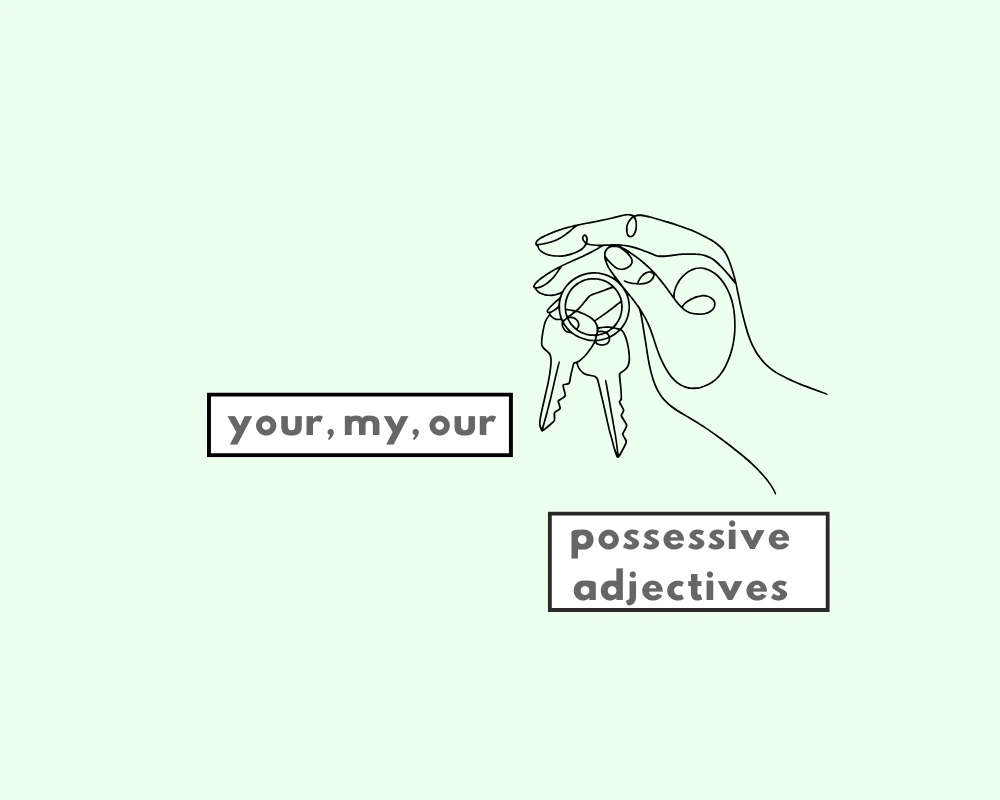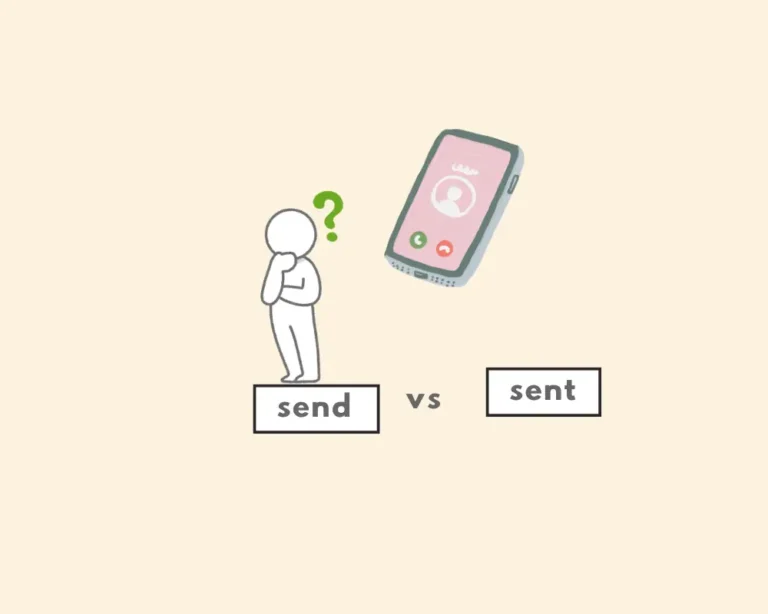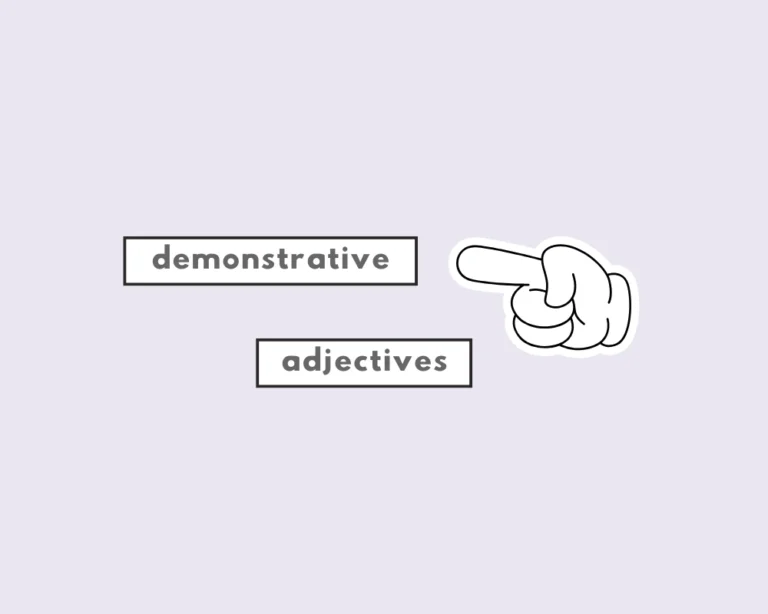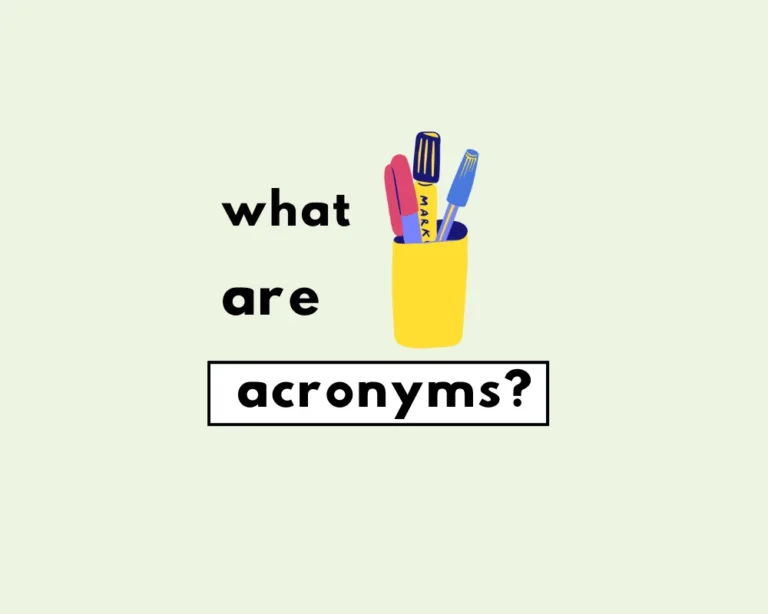- Do they know the restaurant is mine?
- Do they know it’s my restaurant?
My or mine (possessive adjectives vs. possessive pronouns)
- Will you pass me your phone?
- The research is yours.
My, your, our (possessive adjectives)
- These are my sweatpants.
- It’s your decision.
- It’s our honeymoon.
My, your, and our in the above are possessive adjectives. Like all adjectives, they tell us more about a noun or pronoun.
However, unlike other adjectives, possessive adjectives (as the name implies) show possession or belonging. They can also indicate a relation, association, or connection between people, places, things, etc.
There are seven possessive adjectives: are, my, our, your, his, her, its, and their.
- My car is red.
- Your phone is ringing.
- His name is John.
- Her bag is new.
- Our house is big.
- Their dog is friendly.
- Its tail is fluffy.
My or Mine (Possessive adjectives vs. possessive pronouns)
- You can take this jacket back; it’s yours.
- She only wants those because they’re mine.
- The research is theirs.
The main difference between possessive adjectives and pronouns is that the latter replaces nouns and stands alone in sentences.
- This book is very interesting.
(The book is close to the speaker.)
- I like this dress better than the other one.
That (Singular, Far)
- That car belongs to my neighbor.
- That was his idea!
- That movie we watched last week was amazing.
These and those (Plural, Near)
- These cookies are freshly baked.
(The cookies are near the speaker.)
- Look at these shoes—aren’t they stylish?
- ”Those” (Plural, Far)
(The mountains are far from the speaker.)
– I remember those days when we used to play outside all day.
Demonstrative adjectives vs. demonstrative pronouns
Demonstrative adj. precede the noun(s) they modify, whereas demonstrative pronouns replace them entirely. See the difference:
– Demonstrative adjective: I don’t like that movie.
– Demonstrative pronouns : I don’t like that.
Examples with this, that, these, and those
We use demonstrative adjectives in everyday conversation, to write, and when giving or reading instructions:
In conversation: Do you want this pen or that one? I’m going to wear these jeans tonight.
In writing: This article explores the impact of climate change. Those documents need to be signed today.
For instructions: Add this ingredient first. Avoid these exercises that can lead to injury.
When to Use Demonstrative Adjectives
Demonstrative adjectives depend on two main factors:
- Number – Are you referring to something singular or plural?
- Distance – Is the object near or far from the speaker?
– Use this for one thing that is close.
– Use that for one thing that is farther away.
– Use these for more than one thing that is close.
– Use those for more than one thing that is farther away.
1. Physical Distance
– This chair (the one right here).
– That chair (the one across the room).
2. Temporal Distance (Time)
Demonstrative adjectives can also be used to refer to time, not just physical space.
– This week has been very busy. (Current week — near in time.)
– I’ll never forget those days from childhood. (Past — far in time.)
3. Emotional or Psychological Distance
Sometimes, demonstratives can reflect emotional closeness or distance, even if physical distance is unclear.
– I hate that attitude. (Emotionally distant or negative.)
– I love this idea. (Emotionally close or positive.)
Tips for Using Demonstrative Adjectives Correctly
- Always Use Them with a Noun
– Incorrect: I don’t like this. (Unless “this” is a pronoun.)
– Correct: I don’t like this movie.
- Be Mindful of Plural and Singular Forms
– Incorrect: I love these book.
– Correct: I love this book.
– Correct: I love these books.
Match Distance to Context
Make sure the demonstrative adjective fits the physical or abstract context of the sentence.
– Talking about something nearby: use this or these.
– Talking about something far: use that or those.
Other types of adjectives
- Comparative
- Superlative
- Predicate
- Compound
- Possessive
- Demonstrative
- Proper
- Participial
- Limiting
- Descriptive
- Interrogative
- Attributive
- Distributive
To distinguish possessive adjectives (my, your, his, etc.) from possessive pronouns (mine, yours, his, etc.), remember that adjectives always precede a noun (“my car”), while pronouns stand alone and replace the noun (“The car is mine“).
Worksheet: Possessive adjectives
Which sentence correctly uses a possessive adjective?
What is the possessive pronoun in the sentence: “That house is theirs.”?
Choose the correct sentence using possessive adjectives.
Which sentence uses a demonstrative pronoun?
Which word is a demonstrative adjective?
This is book.
The sweater is .
Is that car?
I chose option.
Look at flowers.
FAQs
What’s the difference between “my” and “mine”?
+
What are possessive adjectives?
+
What are demonstrative adjectives?
+
How do demonstrative adjectives differ from pronouns?
+
Give examples of demonstrative adjectives?
+
Yash, D. "Compare these sentences:." Grammarflex, Jun 25, 2025, https://www.grammarflex.com/when-to-use-my-or-mine-(possessive-adjectives-vs/.










